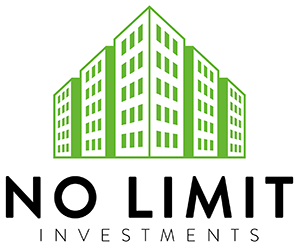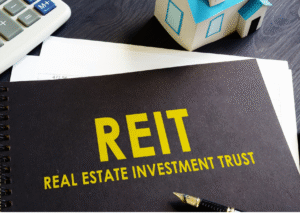What Exactly Are Investment Property Bridge Loans?
Investment property bridge loans are short-term financing tools that allow investors to purchase or renovate real estate before securing long-term funding. These loans are called “bridge” loans because they literally bridge the financial gap between the purchase of a property and the refinancing or sale of that property. Typically, bridge loans last between six months and three years, offering investors the flexibility to act quickly in competitive markets.
A bridge loan can help investors acquire undervalued properties, complete renovations, or stabilize income before transitioning to a permanent loan such as a Buy & Hold Mortgage or DSCR Loan. Since timing is crucial in real estate investing, bridge loans empower buyers to move fast, especially when traditional financing takes too long.
According to the Consumer Financial Protection Bureau (CFPB), bridge loans are ideal for situations where an immediate purchase or rehab is necessary, but permanent financing is not yet available (Consumer Financial Protection Bureau, 2024). They often come with higher interest rates, but the speed and flexibility they offer make them valuable tools for professional and first-time investors alike.
How Do Bridge Loans Work in Real Estate Investing?
A bridge loan functions by providing short-term capital that’s secured by the property being purchased or improved. Once the property stabilizes, through renovation, lease-up, or value appreciation, the investor can exit the bridge loan by selling the property or refinancing it with a long-term mortgage.
The process typically involves these steps:
- Application and Approval: Investors submit documentation detailing the property, their experience, and exit strategy.
- Funding and Disbursement: The lender releases funds quickly, often within days or weeks.
- Renovation or Holding Period: The investor uses funds to add value or stabilize the asset.
- Refinance or Sale: Once the property value increases, the loan is paid off using proceeds from the sale or a refinance product.
At this point, No Limit Investments can assist by transitioning investors into other financial tools like Fix & Flip Loans, Cash-Out Refinance, or BRRRR Financing, depending on their exit goals.
Why Are Bridge Loans Useful for Time-Sensitive Property Deals?
Bridge loans are most valuable when an investor needs to move faster than traditional lenders allow. Real estate markets move quickly—particularly in competitive regions where underpriced or distressed assets are scarce. A standard mortgage may take 30–60 days to process, but a bridge loan can close in a fraction of that time.
Here are a few time-sensitive scenarios where bridge loans shine:
- Auction or Foreclosure Purchases: Investors can secure funding before competitors close the deal.
- Value-Add Opportunities: Renovating or stabilizing a property before resale.
- Portfolio Acquisitions: Purchasing multiple properties simultaneously.
- Transition to Permanent Financing: Bridging the gap before long-term loans finalize.
The ability to act fast can determine whether an investor wins or loses a deal. No Limit Investments provides real estate financing solutions that include bridge funding for these time-critical moments, helping investors seize profitable opportunities.
What Are the Key Benefits of Investment Property Bridge Loans?
While bridge loans come with higher interest rates than traditional loans, their benefits often outweigh the costs for strategic investors. Some of the main advantages include:
- Speed: Quick approval and funding to compete in fast-moving markets.
- Flexibility: Tailored repayment and exit terms to match project timelines.
- Leverage: Access to capital for acquisition, rehab, or stabilization.
- Value Creation: Potential to increase property value through renovations or repositioning.
- Transition Financing: Serves as an interim tool before long-term funding like Buy & Hold Mortgages or DSCR Loans.
Additionally, investors working with No Limit Investments can pair bridge loans with advisory support through Credit & Debt Advisory and Growth & Development Services to improve their long-term financial outlook.
How Can Bridge Loans Support Fix & Flip, BRRRR, and Buy & Hold Strategies?
Bridge loans are incredibly versatile, they fit neatly into popular investment models such as Fix & Flip, BRRRR (Buy, Rehab, Rent, Refinance, Repeat), and Buy & Hold strategies. Here’s how:
- Fix & Flip: Bridge loans provide the upfront capital to purchase and renovate properties quickly, so investors can sell them at a profit.
- BRRRR Strategy: After renovating and renting, investors can refinance with BRRRR Financing or a Cash-Out Refinance to free up capital for future projects.
- Buy & Hold: For investors who want to build passive income streams, bridge loans help secure properties fast, then transition into Buy & Hold Mortgages once cash flow stabilizes.
This flexibility makes bridge loans a cornerstone for short- and mid-term investment approaches. No Limit Investments helps structure these deals so that bridge funding transitions seamlessly into more permanent, cash-flow-oriented loan products.
What Should Investors Consider Before Applying for a Bridge Loan?
While bridge loans are powerful tools, they also come with certain responsibilities. Before applying, investors should consider:
- Exit Strategy: Plan how you will repay or refinance the loan (sale, refinance, or equity).
- Project Timeline: Ensure the property improvements or value-add efforts can be completed before maturity.
- Loan Terms: Understand interest rates, fees, and potential prepayment penalties.
- Property Value: Confirm that the after-repair value (ARV) justifies the loan amount.
- Lender Reputation: Choose an experienced partner that understands real estate investment cycles.
At No Limit Investments, investors receive not only funding but also strategic insight through Credit & Debt Advisory and Business Credit Facilities, ensuring every loan decision supports long-term portfolio growth.
How Do Bridge Loans Compare to Other Real Estate Financing Options?
Bridge loans differ significantly from conventional loans or private money lending. The biggest distinctions involve timing, structure, and purpose.
Traditional loans are designed for long-term use, often tied to owner-occupied or stabilized properties. They typically take weeks or even months to process and come with strict underwriting requirements. By contrast, bridge loans are short-term, flexible, and ideal for transitional periods, such as when an investor needs to acquire or rehab a property before refinancing.
Here’s a quick comparison in narrative form:
- Bridge Loans: Best for short-term acquisitions or renovations, usually lasting from six months to three years. They fund quickly—sometimes within days—and are secured by the property’s value. Interest rates are slightly higher but offer flexibility and speed.
- Conventional Loans: Intended for long-term ownership or stabilized investments, often with 15- to 30-year terms. These loans take longer to close but generally have lower interest rates.
- DSCR Loans: Focused on rental income rather than personal income, making them ideal for investors looking to qualify based on property performance.
- Fix & Flip Loans: Similar to bridge loans in speed and short-term nature but tailored for renovation and resale projects based on after-repair value (ARV).
While bridge loans are not suitable for every investor, they’re powerful tools for those seeking agility and short-term leverage. Once a property is stabilized, borrowers can refinance into Buy & Hold Mortgages, Cash-Out Refinance, or New Construction Loans, all available through No Limit Investments.
What Role Do Loan Terms and Exit Strategies Play in Bridge Financing Success?
Success with bridge loans hinges on one word: strategy. The key to maximizing returns lies in aligning your loan terms with your project goals. Investors should negotiate terms that support their timeline and risk tolerance. For example:
- Shorter Terms: Ideal for quick flips or minor rehabs.
- Longer Terms: Suitable for complex renovations or multi-unit stabilizations.
- Interest-Only Payments: Preserve cash flow during renovation or lease-up phases.
- Defined Exit Strategy: Refinancing or selling before maturity to avoid penalties.
A clear exit strategy mitigates risk and ensures investors transition smoothly into long-term financing. Working with a lender that provides flexible options, like No Limit Investments, makes it easier to manage each stage of the investment process.
How Can You Partner with No Limit Investments for Smarter Real Estate Financing?

If you’re an investor seeking the right balance between speed, flexibility, and scalability, No Limit Investments offers tailored financing solutions to match your goals. Whether you’re flipping homes, building rentals, or scaling a portfolio, their suite of services covers every stage of the real estate investment journey, including:
- Fix & Flip Loans for fast capital access.
- Buy & Hold Mortgages for stable long-term returns.
- BRRRR Financing for portfolio recycling.
- Cash-Out Refinance to unlock equity.
- DSCR Loans to leverage rental income.
- New Construction Loans for builders and developers.
- Business Credit Facilities for expanding capital access.
- Credit & Debt Advisory to guide smarter financial decisions.
- Growth & Development Services to build sustainable wealth.
Visit https://nolimitinvestments.net/ today to explore your next real estate opportunity. With professional guidance and flexible financing, you can unlock your investment potential, without limits.
Final Thoughts
Investment property bridge loans are essential tools for investors who want to capitalize on real estate opportunities without delay. They provide the liquidity and speed needed to act when timing is critical, allowing investors to acquire, improve, and transition properties strategically. By partnering with No Limit Investments, you gain access to both capital and expertise, ensuring that every project moves from vision to value.
Smart real estate investing isn’t about luck, it’s about preparation, partnerships, and precision. Bridge loans, when used wisely, can be the key that connects opportunity to success.
Works Cited
Consumer Financial Protection Bureau. What Is a Bridge Loan and How Does It Work? CFPB, 2024, www.consumerfinance.gov.
U.S. Department of Housing and Urban Development. Real Estate Investment and Financing Overview. HUD, 2024, www.hud.gov.
Federal Reserve Board. Understanding Real Estate Lending Standards and Practices. FRB, 2023, www.federalreserve.gov.
“No Limit Investments: Real Estate Financing Solutions.” No Limit Investments, 2025, https://nolimitinvestments.net/.
Frequently Asked Questions (FAQs)
- What are investment property bridge loans?
Investment property bridge loans are short-term financing solutions that help real estate investors purchase, renovate, or stabilize properties before securing long-term financing.
- How long do bridge loans typically last?
Most bridge loans range from six months to three years, giving investors enough time to renovate or refinance through products like Buy & Hold Mortgages or DSCR Loans.
- When should investors consider using bridge loans?
Bridge loans are ideal for time-sensitive opportunities such as auction purchases, fix-and-flip projects, or short-term renovations that increase property value.
- How can investors exit a bridge loan successfully?
Investors can repay a bridge loan by selling the property or refinancing into long-term options like BRRRR Financing, Cash-Out Refinance, or a New Construction Loan.
- Why should investors choose No Limit Investments?
No Limit Investments offers a full range of real estate financing services from Fix & Flip Loans to Credit & Debt Advisory—designed to help investors scale their portfolios efficiently.







